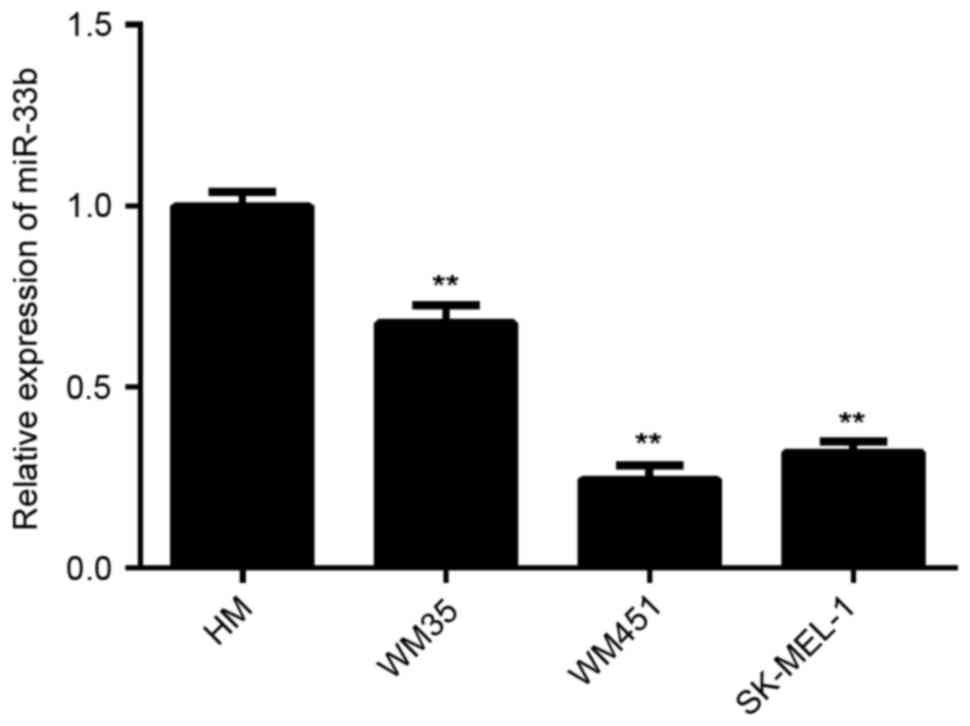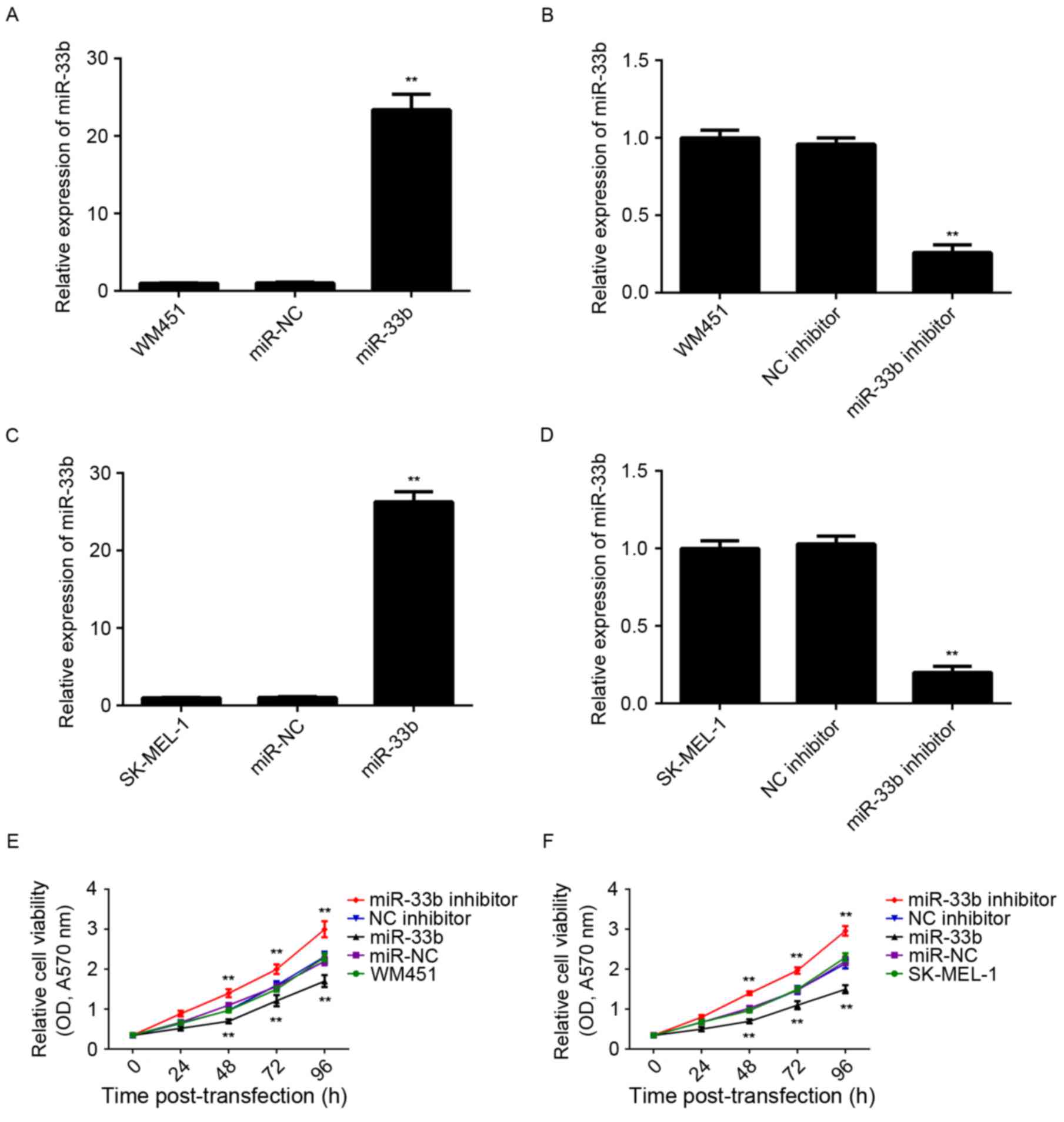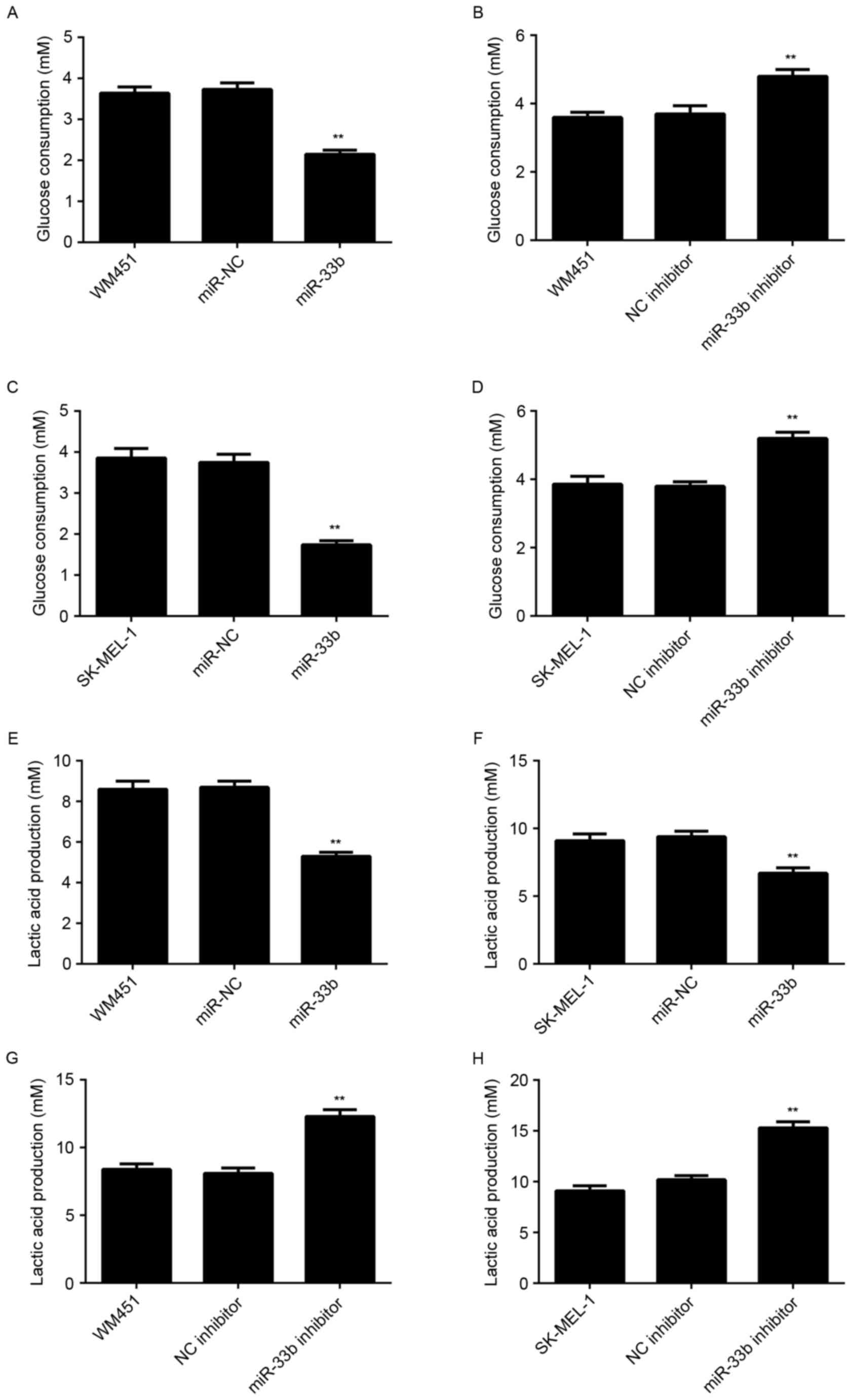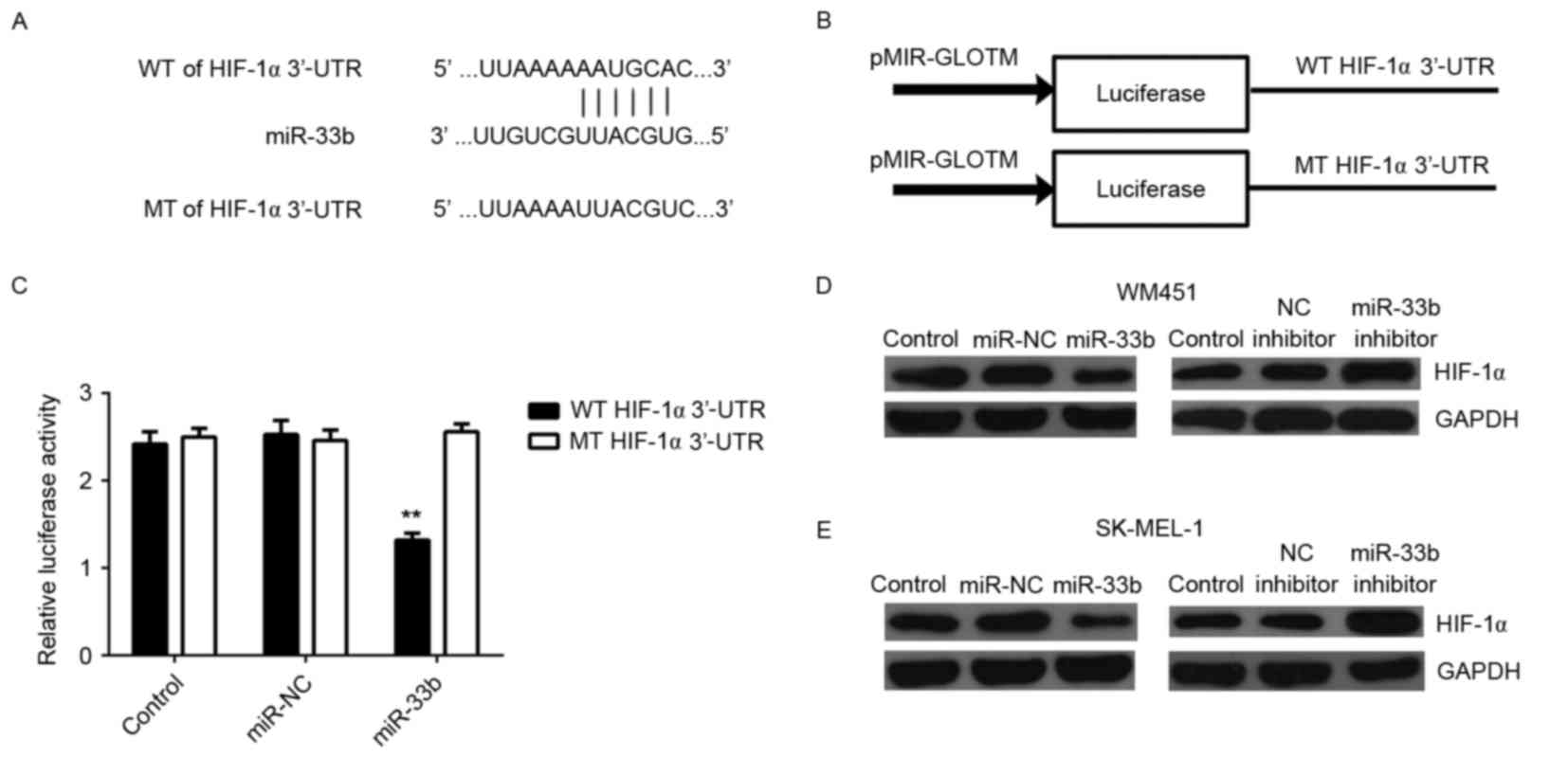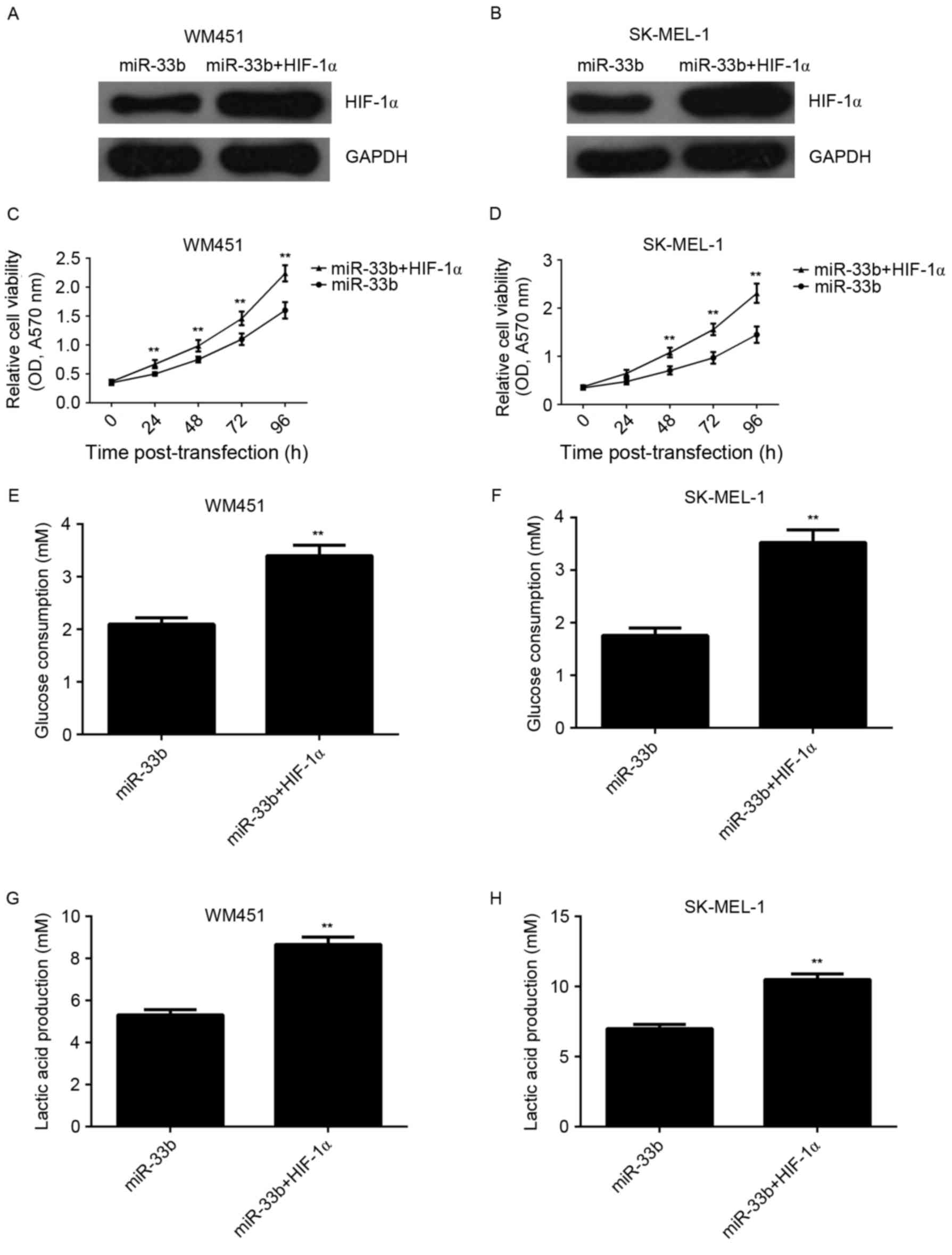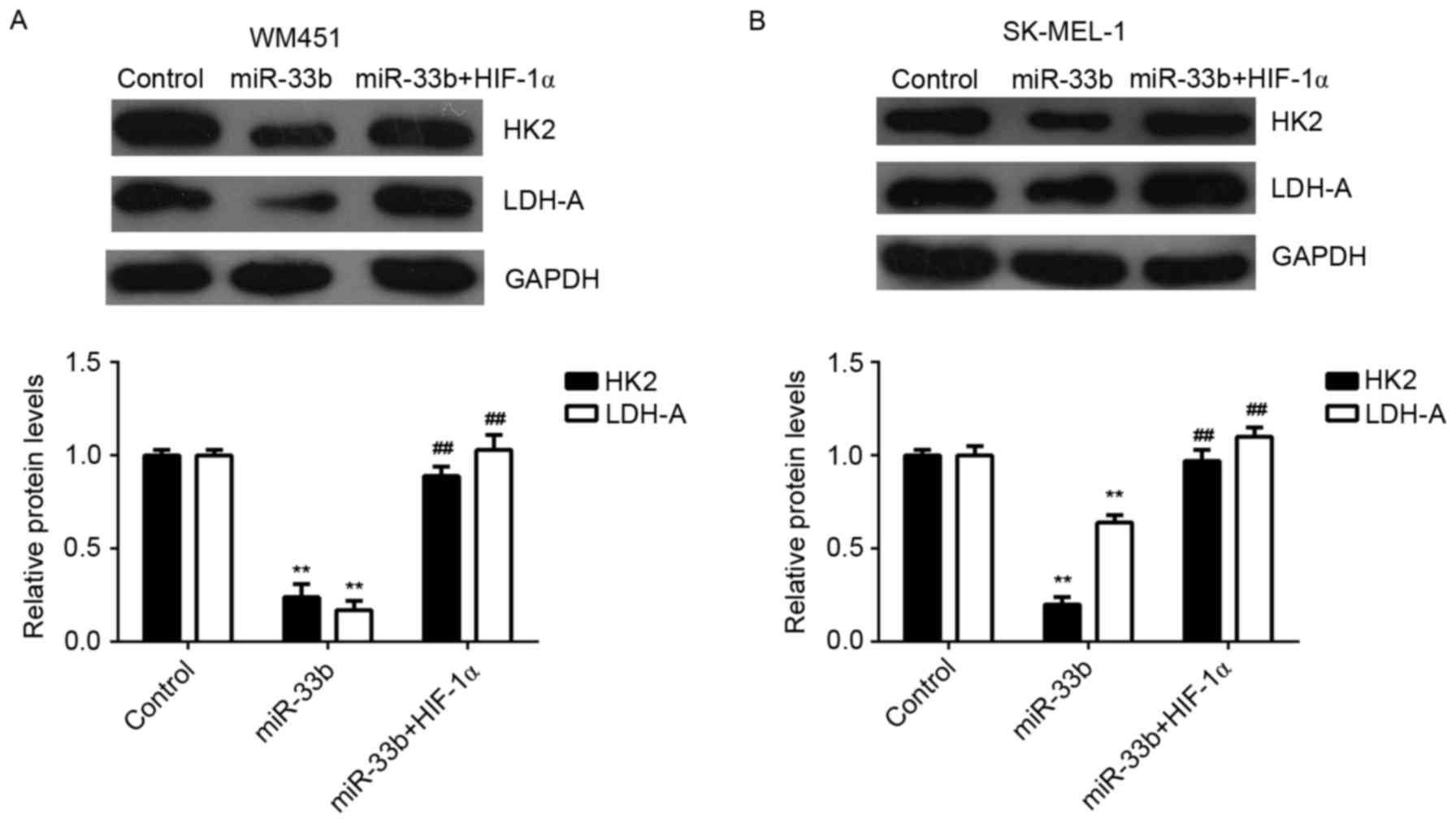|
1
|
Singh AD, Turell ME and Topham AK: Uveal
melanoma: Trends in incidence, treatment, and survival.
Ophthalmology. 118:1881–1885. 2011. View Article : Google Scholar : PubMed/NCBI
|
|
2
|
Davey RJ, van der Westhuizen A and Bowden
NA: Metastatic melanoma treatment: Combining old and new therapies.
Crit Rev Oncol Hematol. 98:242–453. 2016. View Article : Google Scholar : PubMed/NCBI
|
|
3
|
Ho J, de Moura MB, Lin Y, Vincent G,
Thorne S, Duncan LM, Hui-Min L, Kirkwood JM, Becker D, Van Houten B
and Moschos SJ: Importance of glycolysis and oxidative
phosphorylation in advanced melanoma. Mol Cancer. 11:762012.
View Article : Google Scholar : PubMed/NCBI
|
|
4
|
Shestov AA, Mancuso A, Leeper DB and
Glickson JD: Metabolic network analysis of DB1 melanoma cells: How
much energy is derived from aerobic glycolysis? Adv Exp Med Biol.
765:265–271. 2013. View Article : Google Scholar : PubMed/NCBI
|
|
5
|
Schuster S, Boley D, Möller P, Stark H and
Kaleta C: Mathematical models for explaining the Warburg effect: A
review focussed on ATP and biomass production. Biochem Soc Trans.
43:1187–1194. 2015. View Article : Google Scholar : PubMed/NCBI
|
|
6
|
Slominski A, Kim TK, Brożyna AA,
Janjetovic Z, Brooks DL, Schwab LP, Skobowiat C, Jóźwicki W and
Seagroves TN: The role of melanogenesis in regulation of melanoma
behavior: Melanogenesis leads to stimulation of HIF-1α expression
and HIF-dependent attendant pathways. Arch Biochem Biophys.
563:79–93. 2014. View Article : Google Scholar : PubMed/NCBI
|
|
7
|
Marín-Hernández A, Gallardo-Pérez JC,
Ralph SJ, Rodríguez-Enríquez S and Moreno-Sánchez R: HIF-1alpha
modulates energy metabolism in cancer cells by inducing
over-expression of specific glycolytic isoforms. Mini Rev Med Chem.
9:1084–1101. 2009. View Article : Google Scholar : PubMed/NCBI
|
|
8
|
Kluza J, Corazao-Rozas P, Touil Y,
Jendoubi M, Maire C, Guerreschi P, Jonneaux A, Ballot C, Balayssac
S, Valable S, et al: Inactivation of the HIF-1α/PDK3 signaling axis
drives melanoma toward mitochondrial oxidative metabolism and
potentiates the therapeutic activity of pro-oxidants. Cancer Res.
72:5035–5047. 2012. View Article : Google Scholar : PubMed/NCBI
|
|
9
|
Su J, Chen X and Kanekura T: A
CD147-targeting siRNA inhibits the proliferation, invasiveness and
VEGF production of human malignant melanoma cells by
down-regulating glycolysis. Cancer Lett. 273:140–147. 2009.
View Article : Google Scholar : PubMed/NCBI
|
|
10
|
Tang YQ, Jaganath IB, Manikam R and
Sekaran SD: Inhibition of MAPKs, Myc/Max, NFκB, and hypoxia
pathways by Phyllanthus prevents proliferation, metastasis and
angiogenesis in human melanoma (MeWo) cancer cell line. Int J Med
Sci. 11:564–577. 2014. View Article : Google Scholar : PubMed/NCBI
|
|
11
|
Mirzaei H, Gholamin S, Shahidsales S,
Sahebkar A, Jaafari MR, Mirzaei HR, Hassanian SM and Avan A:
MicroRNAs as potential diagnostic and prognostic biomarkers in
melanoma. Eur J Cancer. 53:25–32. 2016. View Article : Google Scholar : PubMed/NCBI
|
|
12
|
Ambros V: The functions of animal
microRNAs. Nature. 431:350–355. 2004. View Article : Google Scholar : PubMed/NCBI
|
|
13
|
Zhang P, Bai H, Liu G, Wang H, Chen F,
Zhang B, Zeng P, Wu C, Peng C, Huang C, et al: MicroRNA-33b,
upregulated by EF24, a curcumin analog, suppresses the
epithelial-to-mesenchymal transition (EMT) and migratory potential
of melanoma cells by targeting HMGA2. Toxicol Lett. 234:151–161.
2015. View Article : Google Scholar : PubMed/NCBI
|
|
14
|
Zhang P, Huang C, Fu C, Tian Y, Hu Y, Wang
B, Strasner A, Song Y and Song E: Cordycepin (3′-deoxyadenosine)
suppressed HMGA2, Twist1 and ZEB1-dependent melanoma invasion and
metastasis by targeting miR-33b. Oncotarget. 6:9834–9853. 2015.
View Article : Google Scholar : PubMed/NCBI
|
|
15
|
Livak KJ and Schmittgen TD: Analysis of
relative gene expression data using real-time quantitative PCR and
the 2(−Delta Delta C(T)) method. Methods. 25:402–408. 2001.
View Article : Google Scholar : PubMed/NCBI
|
|
16
|
Yang X, Cheng Y, Li P, Tao J, Deng X,
Zhang X, Gu M, Lu Q and Yin C: A lentiviral sponge for miRNA-21
diminishes aerobic glycolysis in bladder cancer T24 cells via the
PTEN/PI3K/AKT/mTOR axis. Tumour Biol. 36:383–391. 2015. View Article : Google Scholar : PubMed/NCBI
|
|
17
|
Zheng K, Liu W, Liu Y, Jiang C and Qian Q:
MicroRNA-133a suppresses colorectal cancer cell invasion by
targeting Fascin1. Oncol Lett. 9:869–874. 2015.PubMed/NCBI
|
|
18
|
Liu G, Xu Z and Hao D: MicroRNA451
inhibits neuroblastoma proliferation, invasion and migration by
targeting macrophage migration inhibitory factor. Mol Med Rep.
13:2253–2260. 2016.PubMed/NCBI
|
|
19
|
Ma D, Tao X, Gao F, Fan C and Wu D:
miR-224 functions as an onco-miRNA in hepatocellular carcinoma
cells by activating AKT signaling. Oncol Lett. 4:483–488.
2012.PubMed/NCBI
|
|
20
|
Mazar J, Qi F, Lee B, Marchica J,
Govindarajan S, Shelley J, Li JL, Ray A and Perera RJ: MicroRNA 211
functions as a metabolic switch in human melanoma cells. Mol Cell
Biol. 36:1090–1108. 2016. View Article : Google Scholar : PubMed/NCBI
|
|
21
|
Jayawardana K, Schramm SJ, Tembe V,
Mueller S, Thompson JF, Scolyer RA, Mann GJ and Yang J:
Identification, review, and systematic cross-validation of microRNA
prognostic signatures in metastatic melanoma. J Invest Dermatol.
136:245–254. 2016. View Article : Google Scholar : PubMed/NCBI
|
|
22
|
Schultz J, Lorenz P, Gross G, Ibrahim S
and Kunz M: MicroRNA let-7b targets important cell cycle molecules
in malignant melanoma cells and interferes with
anchorage-independent growth. Cell Res. 18:549–557. 2008.
View Article : Google Scholar : PubMed/NCBI
|
|
23
|
Yan D, Zhou X, Chen X, Hu DN, Dong XD,
Wang J, Lu F, Tu L and Qu J: MicroRNA-34a inhibits uveal melanoma
cell proliferation and migration through downregulation of c-Met.
Invest Ophthalmol Vis Sci. 50:1559–1565. 2009. View Article : Google Scholar : PubMed/NCBI
|
|
24
|
Zhou J, Xu D, Xie H, Tang J, Liu R, Li J,
Wang S, Chen X, Su J, Zhou X, et al: miR-33a functions as a tumor
suppressor in melanoma by targeting HIF-1α. Cancer Biol Ther.
16:846–855. 2015. View Article : Google Scholar : PubMed/NCBI
|
|
25
|
Bost F, Decoux-Poullot AG, Tanti JF and
Clavel S: Energy disruptors: Rising stars in anticancer therapy?
Oncogenesis. 5:e1882016. View Article : Google Scholar : PubMed/NCBI
|
|
26
|
Pavlova NN and Thompson CB: The emerging
hallmarks of cancer metabolism. Cell Metab. 23:27–47. 2016.
View Article : Google Scholar : PubMed/NCBI
|
|
27
|
Schönenberger MJ and Kovacs WJ: Hypoxia
signaling pathways: Modulators of oxygen-related organelles. Front
Cell Dev Biol. 3:422015. View Article : Google Scholar : PubMed/NCBI
|
|
28
|
Valencak J, Kittler H, Schmid K, Schreiber
M, Raderer M, Gonzalez-Inchaurraga M, Birner P and Pehamberger H:
Prognostic relevance of hypoxia inducible factor-1alpha expression
in patients with melanoma. Clin Exp Dermatol. 34:e962–e964. 2009.
View Article : Google Scholar : PubMed/NCBI
|
|
29
|
Zhuang L, Scolyer RA, Murali R, McCarthy
SW, Zhang XD, Thompson JF and Hersey P: Lactate dehydrogenase 5
expression in melanoma increases with disease progression and is
associated with expression of Bcl-XL and Mcl-1, but not Bcl-2
proteins. Mod Pathol. 23:45–53. 2010. View Article : Google Scholar : PubMed/NCBI
|
|
30
|
Weide B, Richter S, Büttner P, Leiter U,
Forschner A, Bauer J, Held L, Eigentler TK, Meier F and Garbe C:
Serum S100B, lactate dehydrogenase and brain metastasis are
prognostic factors in patients with distant melanoma metastasis and
systemic therapy. PLoS One. 8:e816242013. View Article : Google Scholar : PubMed/NCBI
|















